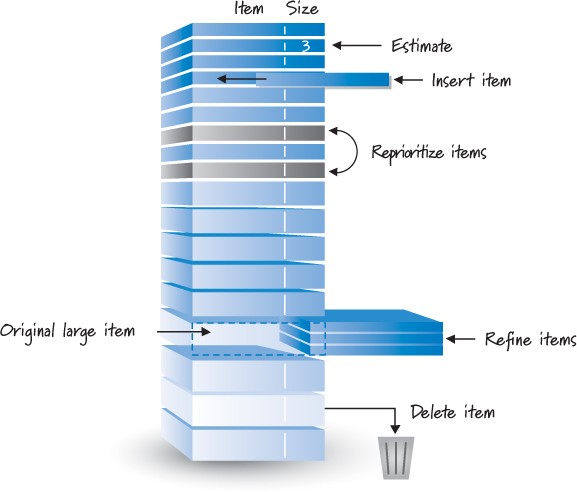With each project, we ask ourselves the question – how to deliver an eCommerce project within budget? To be honest, it’s a really tough question and an even harder task because developing new eCommerce systems always brings unknown challenges that are not taken into cost estimates. But also it brings great opportunities.
In the world of eCommerce projects, the predictability of the budget and time helps to establish good cooperation between clients and development agencies, and with this comes the possibility to develop the highest quality software. So how can we achieve this? We asked the best eCommerce Project Managers from our company what their best practices are to deliver the best quality of a project within a given budget.
Why does the project go over budget?
Let’s start with a better understanding of the problem. No eCommerce project is the same and this is really great. It lets us shape diversity of the market and tailor unique solutions to our clients’ needs. If we look at this, on the other hand, we’ll notice that such a situation is a great challenge. This concerns choosing the platform of a future shop, developing processes, designing visuals and matching the best tools.
Understanding of business goals
Still, it is not these choices which are the main reason for risking or even exploding the budget. The major reason lies in the clear understanding of business goals by all sides. This sounds obvious, doesn’t it? However, working with companies and agencies on new eCommerce solutions has shown us that this is crucial. Misunderstanding or improper description of business goals happens quite often and hurts your budget from the very beginning. It will cause imprecise estimates and in the future, it will lead to changes in the project, and prolong its implementation.
Poor technical analysis
Not less important is poor or even lack of proper technical analysis before the project starts. It is quite common that during project implementation, we are met with incomplete technical documentation of the previous eCommerce system and extra time (thus money) is consumed to fill those gaps. This leads us to the oldest and most common problem in any project …
Insufficient communication
We work in different organizational cultures and very often simple things grow to become a problem. It gets harder when you work with teams from another country, speaking various languages and working in different time zones. Unfortunately, this isn’t clear to many leaders. Inadequate communication between project participants can prolong processes, lead to mistakes or misunderstandings and, as a result, raises the costs of the project. This might be especially painful in the face of short deadlines and dynamic sprints.
Delivering software project within budget
So, is it possible to deliver a software project within budget? Yes, it is. There are many ways to do that, but we believe that the most important is to stay open-minded and flexible. Maintaining the budget requires adjusting another element of the project – time and scope. That’s why we base our projects on the time-and-material attitude and scrum methodology.
The key point to this process is trust and cooperation. Clear communication channels must be set at the start of each project. Tasks and responsibilities are divided among team members and described in an external tool that allows for issue tracking and project management (e.g. Jira).
The projects are divided into sprints and the process itself is fast and iterative. Working in the T&M business model helps us to fit in clients’ operating procedures, requirements, and goals. It means that during project planning and implementation, we use backlogs to control the process and we still have the opportunity to adjust requirements or even replace some features.
Source: www.informit.com
Tips from eCommerce Project Managers
We asked our Project Managers about their best practices. Apart from the project type or scope, there are a few rules that will always help you to run your project on time and within budget.
Keep the business goals clear
Start your project with a deep scoping session. Taking part in product workshops with your client will help a lot to set business goals for your eCommerce project. Prepare full documentation for including at least a list of requirements for the new store, technical team on the client’s side, and customers expectations. Analyze functionalities and their scope, and set a plan. Confirm everything with decision makers.
“Get the client familiar with the system/framework you are implementing on top of. We usually start our scoping session from the presentation of the system we would like to use. This is the best way to find shortcuts and optimizations. The worst case scenario is to design everything from scratch. Build on the shoulders of giants!” – Tom Karwatka, Divante CEO
One Product Owner is enough
Identify all key roles on both sides – clients and agency. Start your project with a good kick-off meeting. Set the rules of communication and confirmation processes. Ensure that all involved team members understand the scope of the project and accept it.
“It is extremely important to have full understanding and approval of the process on the client’s side. Also having one contact person, a decision maker like the Product Owner, helps us to run the project swiftly and time efficiently” – Grzegorz Bandurowski
During the process, stay transparent, report progress and consult your client in each sprint. Work on demo’s and schemes to make a decision before engaging resources. Try to catch all compulsory changes in the early phases of the project to avoid exceeding the budget.

Source: www.agilemodeling.com
Cut down on features
It’s sure we will make some changes in the project. This might be due to meeting changing clients’ needs or technical obstacles. Each time, present different options with their pros and cons. Look for arguments in numbers, instead of presumptions and emotions. Discuss it and weigh properly the costs and benefits of the decision. Analyze the project on each step and look for opportunities for optimization. See what unfolds.
“Always set priorities! We divide all tasks with the MoSCoW method to define what we need for an MVP and what is crucial in the project. When we get all MUSTs, we start working on things that will enrich the eCommerce platform” – Wojtek Gajewski
What if you cannot stay within the budget?
The characteristic of an eCommerce project is that they evolve a lot. We treat it as a natural part of software development. On each step of new solution development, altogether with our clients, we understand the project better. Sometimes we discover that some project assumptions need to be changed or should be changed to get better results. There are always two paths to choose from – cutting down on the features or raising the budget accordingly to meet needs. Usually, our clients decide to raise the budget and deliver better quality.
The key to success is good understanding and clear communication. That is why on each sprint we discuss with our clients the scope, tools, and solutions of the project and how we can make it better together.
Read more:
https://divante.com/blog/15-project-management-techniques-learn-books/
Published April 27, 2018












